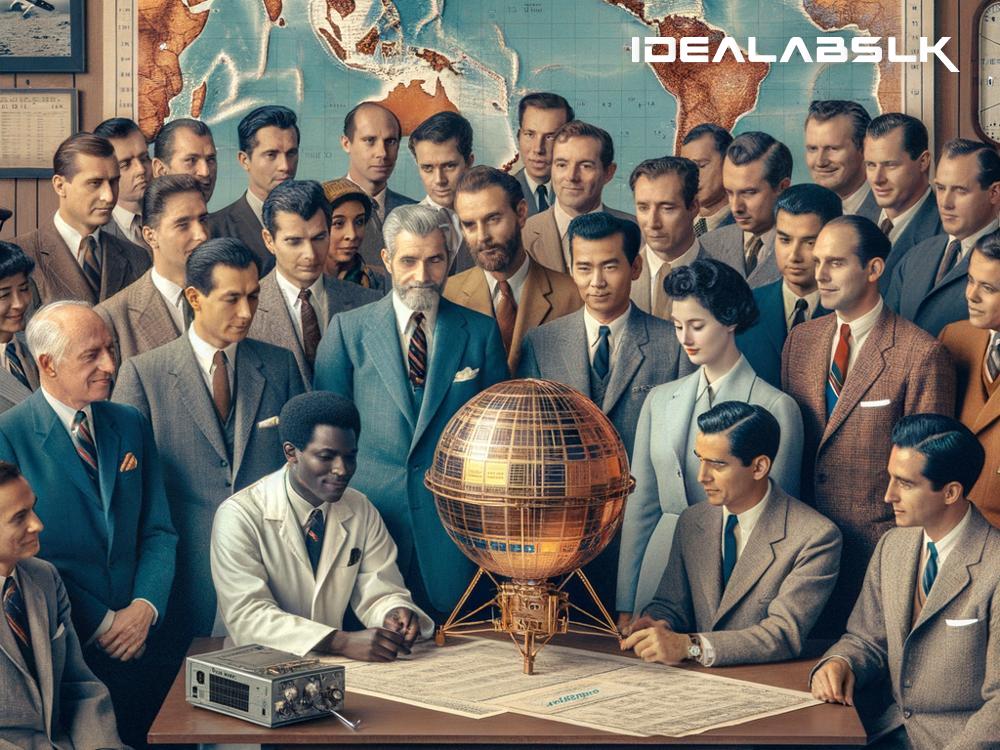Title: From Sputnik to Satnav: The Fascinating Journey of Artificial Satellites and GPS Creation
Once upon a time, the idea of machines flying above Earth, guiding us to our destinations, and helping us communicate seemed like something straight out of a science fiction novel. Today, this concept is not just a reality but a crucial part of our daily lives, thanks to the advent of artificial satellites and the birth of the Global Positioning System (GPS).
The Dawn of the Artificial Satellite Era
The story of artificial satellites begins in the midst of the Cold War, a period of intense rivalry between the United States and the Soviet Union. On October 4, 1957, humanity entered a new era when the Soviet Union successfully launched the first artificial satellite, Sputnik 1, into space. This metal sphere, no bigger than a beach ball, with four long antennas trailing behind, sent shockwaves around the world. As it orbited Earth, Sputnik transmitted beeps that could be picked up by anyone with a radio. Though it didn't do much beyond orbiting Earth and sending beeps, Sputnik's launch marked the beginning of space exploration and the utilization of space for various purposes, including communication, navigation, and scientific research.
Following Sputnik's launch, the space race intensified, leading to the creation of several more sophisticated satellites. The United States launched its own first satellite, Explorer 1, in January 1958, which discovered the Van Allen radiation belts, zones of charged particles trapped by Earth's magnetic field.
The Evolution into Navigation and the Birth of GPS
While these early satellites were primarily for scientific discovery and demonstrating technological prowess, they paved the way for the concept of using satellites for navigation. The seeds for GPS were sown when scientists realized that the precise tracking of Sputnik's signals allowed them to pinpoint its location in orbit. This principle - tracking signals from satellites to determine a position on Earth - is the foundation of GPS.
The U.S. Navy developed the first satellite navigation system, Transit, used by U.S. Navy submarines to obtain precise locations while submerged. Transit, operational in the 1960s, provided a taste of the future, enabling pinpoint accuracy in the vast oceans. However, it had limitations, including long wait times for position updates.
The idea of a full-scale, highly accurate, 24/7 global positioning system took shape in the 1970s. The U.S. Department of Defense developed the Global Positioning System, initially for military applications. The system needed a constellation of at least 24 satellites to ensure that at least four satellites would be accessible from any point on Earth at any time, allowing for accurate positioning anywhere in the world.
The first GPS satellite was launched in 1978, and by 1993, the initial constellation was completed, heralding a new era of navigation. Initially intended for military use, GPS technology was made available for civilian use in the 1980s, revolutionizing navigation for everyone.
The Impact of GPS on Modern Life
Today, GPS is an integral part of our daily lives. Beyond just helping us navigate from point A to B, it powers a wide array of services and technologies. GPS synchronizes time signals across the globe, vital for financial transactions, power grids, and telecommunications. It supports emergency services in locating callers, aids farmers in precision agriculture, and enables scientists to monitor climate and environmental changes with unprecedented accuracy.
Conclusion: A Look to the Future
The launch of Sputnik 1 was a monumental event that kickstarted the age of space exploration and led to the development of the indispensable tool that is GPS. From guiding lost travelers to enabling precise scientific research, the impact of artificial satellites and GPS on modern society cannot be overstated. As we look to the future, with plans for more advanced satellites and the evolution of GPS technology, one can only imagine the new horizons we'll explore.
From the beeping metal sphere orbiting Earth to the silent, unseen signals guiding billions of devices across the globe, the journey from the first artificial satellites to the birth of GPS is a testament to human ingenuity and the relentless pursuit of discovery and innovation.

